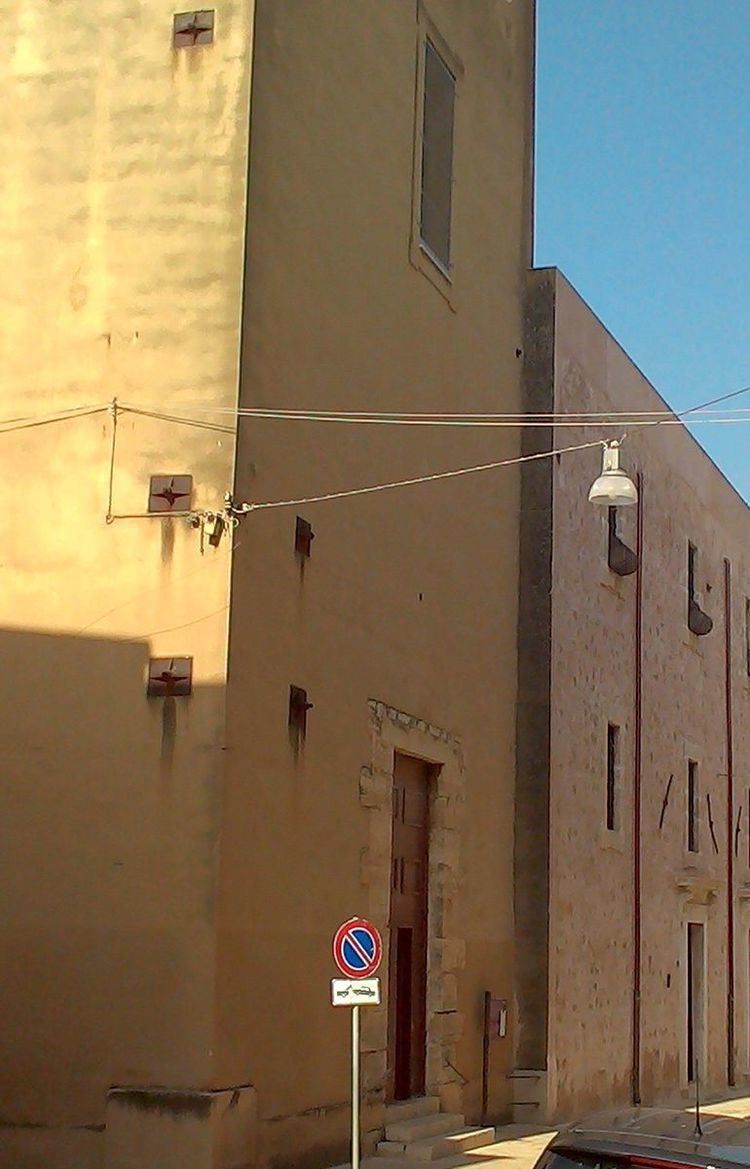Affiliation Benedictine Municipality Alcamo Patron Francis of Paola Architectural type Baroque | Rite Catholic Territory Alcamo Groundbreaking 1531 | |
 | ||
Similar Church of Saint Olivia, Church of Jesus, Castle of the Counts of Modica, Church of Saints Paul and Barth, Basilica of Our Lady of the Assu | ||
Alcamo richiesti interventi per salvare la badia nuova
Badia Nuova is a Catholic church located in Alcamo, in the province of Trapani, Sicily, southern Italy.
Contents
- Alcamo richiesti interventi per salvare la badia nuova
- History
- Description
- The convent of saint Francis of Paola
- Works
- Statues by Serpotta
- References
Adjoining the church there is the convent of Saint Francis of Paola.
History
The church was founded in 1531 by Father Filippo Scamacca, while the convent of Saint Francis of Paola was built some decades later. In 1699 it was pulled down and enlarged with the construction of a new building and some gardens in the first half of the 18th century (1724), under the direction of Giovanni Biagio Amico, an architect from Trapani. Finally in 1968 it was restored because of the Belice Valley earthquake.
The convent was suppressed in 1866, opened again and entirely restored in the subsequent decades.
Description
The church plan is with one nave and a barrel vault with simple pillars, four side altars, and is embellished by a sober stucco decoration.
The convent of saint Francis of Paola
In 1567 Sister Margherita Montesa, together with four sisters, moved here from the convent of Santissimo Salvatore and became the first abbess. Owing to the 1866 Laws, the nunnery had to leave the western wing of the building to a Technica School, later to a lower Vocational School and then to an elementary school; today these premises are used by some associations.
The nuns, faithful to the charisma "ora et labora", live by praying and working; during the day they devote themselves to look after the kitchen garden and other works in the ”convent workshops” such as:
Many years ago the nuns attended Mass behind their high grids, today every morning they are inside the church to hear Mass. Besides they are daily engaged with the Liturgy of the Hours and Lectio Divina, which believers can take part in on request.
Works
Inside the Church there are some 18th century paintings and statues:
Besides them, the high altar is embellished by two wonderful antependiums, embroidered with golden and silver threads by the Benedictine nuns in 1800. In the nunnery there are also: a wooden statue of saint Martha dating back to the 17th century, a painting of Our Lady of Miracles by Giuseppe Renda, and a wonderful wooden tabernacle.
Statues by Serpotta
In the Church there are eight beautiful and elegant stucco statues, called allegorical, realized in 1724 by Giacomo Serpotta in the last period of his activity. They are among the artist's most important masterpieces, and are very close to Bernini's work for their expressive energy. Six statues are located along the walls, on half-height protruding brackets, while two of them, Our lady of Sorrows and Mary Magdalen, adorn the chapel of the Crucifix and are placed on the two sides of the Cross, forming a type of theatrical scene of extraordinary drama. This is one of the characteristics of Serpotta, also visible in many other masterpieces made by him.
The statues are the following:
These stuccoes, of great artistic interest, have an unconsumed patina which has disappeared in many others, that is the allustratura which gives makes them look like wonderful alabasters.
